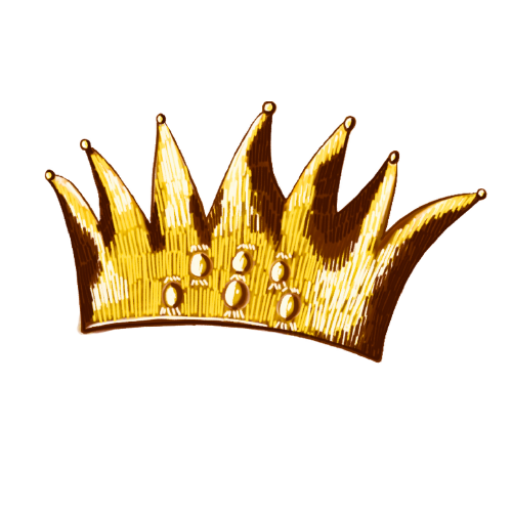Bibliography


Secondary Sources
Anguix-Vilches, Laia. “Rediscovering John Martin: Collecting the Apocalypse in Post-War Britain.” Journal of the History of Collections 36, no. 1 (2024): 179–92.
Campbell, Michael J. “John Martin as a commercial printmaker.” in John Martin: Apocalypse, edited by Martin Myrone. London: Tate Pub., 2011.
Colley, Linda. “The Apotheosis of George III: Loyalty, Royalty and the British Nation 1760-1820.” Past & Present, no. 102 (1984): 94–129.
Costello, Leo. “‘This Cross-Fire of Colours’: JMW Turner (1775-1851) and the Varnishing Days Reconsidered.” The British Art Journal 10, no. 3 (2009): 56–68.
Costello, Leo, and J. M. W. Turner. J.M.W. Turner and the Subject of History. Farnham, Surrey, England: Ashgate, 2012.
Dart, Gregory. “On Great and Little Things: Cockney Art in the 1820s.” Romanticism 14, no. 2 (2008): 149–67.
Feaver, William, and John Martin. The Art of John Martin. Oxford: Clarendon Press, 1975.
Hauptman, William. “Before Somerset House: The Royal Academy in Pall Mall.” The British Art Journal 17, no. 1 (2016): 22–42.
Hemingway, Andrew. “The Politics of Style: Allston’s and Martin’s Belshazzars Compared.” In Transatlantic Romanticism: British and American Art and Literature, 1790-1860, edited by Andrew Hemingway and Alan Wallach, 122–43. University of Massachusetts Press, 2015.
Hoock, Holger. The King’s Artists: The Royal Academy of Arts and the Politics of British Culture, 1760-1840. Oxford: Clarendon Press, 2003.
Hutchison, Sidney C. “The Royal Academy Schools, 1768-1830.” The Volume of the Walpole Society 38 (1960): 123–91.
Jeffreys, Tom. “How do Academicians get elected?” Royal Academy, Published March 6, 2014. https://www.royalacademy.org.uk/article/how-do-academicians-get-elected.
Knight, Caroline. “The History of the Building.” The British Art Journal 2, no. 2 (2000): 6–13.
Laqueur, Thomas W. “The Queen Caroline Affair: Politics as Art in the Reign of George IV.” The Journal of Modern History 54, no. 3 (1982): 417–66.
Morden, Barbara C. John Martin: Apocalypse Now! Newcastle Upon Tyne: Northumbria University Press, 2010.
Morgan, H. C. “The Lost Opportunity of the Royal Academy: An Assessment of Its Position in the Nineteenth Century.” Journal of the Warburg and Courtauld Institutes 32, (1969): 410–20.
Morris, Marilyn. “Princely Debt, Public Credit, and Commercial Values in Late Georgian Britain.” Journal of British Studies 43, no. 3 (2004): 339–65.
Myrone, Martin, ed. John Martin: Apocalypse. London: Tate Pub., 2011.
O’Keefe, Paul. A Genius for Failure: The Life of Benjamin Robert Haydon. London: The Bodley Head, 2009.
Pendered, Mary L. John Martin, Painter: His Life and Times. England: Hurst & Blackett, 1923.
Roach, Catherine. “The Ecosystem of Exhibitions: Venues, Artists, and Audiences in Early Nineteenth-Century London “, British Art Studies, Issue 14. https://doi.org/10.17658/issn.2058-5462/issue-14/croach
Roach, Catherine. “Rehanging Reynolds at the British Institution: Methods for Reconstructing Ephemeral Displays”, British Art Studies, Issue 4, https://doi.org/10.17658/issn.2058-5462/issue-04/croach
Royal Academy of Arts. “Charles Robert Leslie RA (1794 – 1859).” Accessed November 22, 2024. https://www.royalacademy.org.uk/art-artists/name/charles-robert-leslie-ra#:~:text=Leslie%20was%20elected%20as%20an,full%20membership%20following%20in%201826.
Royal Academy of Arts. “John Constable RA (1776 – 1837).” Accessed April 2, 2025. https://www.royalacademy.org.uk/art-artists/name/john-constable-ra.
Smith, E.A. “A Palace for a Prince.” In George IV, 25–32. Yale University Press, 1999.
Smith, E.A. “Prince Regent.” In George IV, 132–45. Yale University Press, 1999.
Smith, Thomas. Recollections of the British Institution for Promoting the Fine Arts in the United Kingdom: With Some Account of the Means Employed for That Purpose; and Biographical Notices of Artists Who Have Received Premiums, 1805-1859. London: Simpkin & Marshal, 1860.
Tate. “About us.” Accessed April 2, 2025. https://www.tate.org.uk/about-us.
Tate. “John Martin.” Accessed April 4, 2025. https://www.tate.org.uk/art/artists/john-martin-371.
Tate. “History Painting.” Accessed April 26, 2025. https://www.tate.org.uk/art/art-terms/h/history-painting.
Waterhouse, E. K. “Benjamin Robert Haydon’s ‘Dentatus.’” The Burlington Magazine for Connoisseurs 88, no. 520 (1946): 175–77.
Primary Sources
Aris’s Birmingham Gazette, England.
The British Newspaper Archive. “Morning Chronicle.” Accessed April 2, 2025. https://www.britishnewspaperarchive.co.uk/titles/morning-chronicle#:~:text=Dickens%20worked%20for%20this%20publication,90.
The Caledonian Mercury, Scotland.
Cook, E.T. and Alexander Wedderburn, eds. Early Pros Writings, vol.1, The Works of John Ruskin. London: George Allen,1903.
The Examiner, England.
Felix Farley’s Bristol Journal, England.
The Leeds Mercury, England.
Leslie, C.R. “Memoirs of the life of John Constable, esq., R. A.: Composed Chiefly of his Letters” London: James Carpenter, 1843.
Martin, John. “Mr. John Martin,” The Illustrated London News. March 17, 1849, 176-177.
Martin, John. The Athenaeum. London: British Periodicals Ltd, 1834, 459.
The Morning Chronicle, England.
Pope, Willard Bissell, ed. 1825-1832, vol.3, The Diary of Benjamin Robert Haydon. Cambridge: Harvard University Press, 1963.
Trench, Melesina Chenevix St. George. The remains of the late Mrs. Richard Trench, edited by Richard Chenevix Trench. London: Parker, Son, and Bourn, 1862.